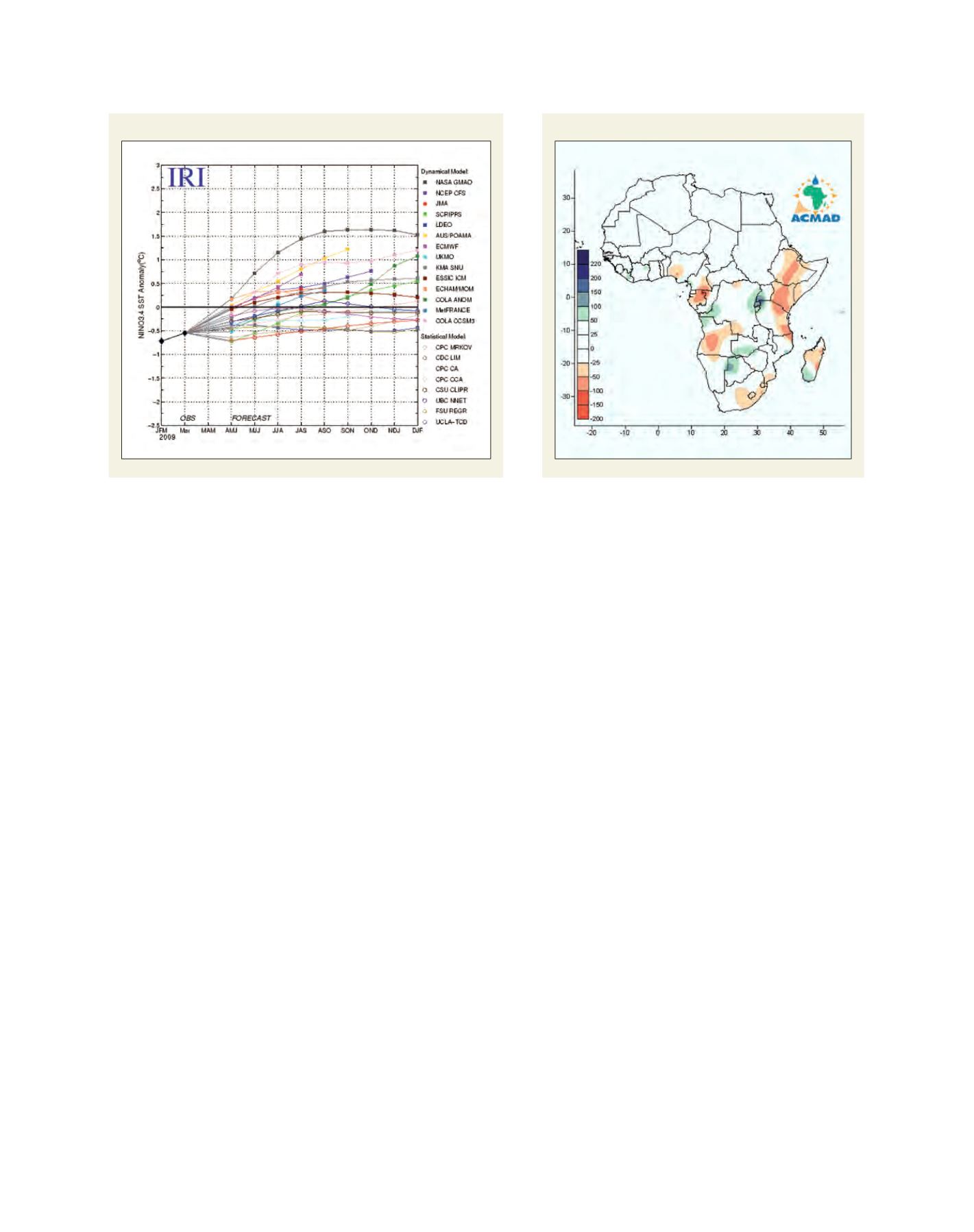

[
] 193
O
bserving
, P
redicting
and
P
rojecting
C
limate
C
onditions
• Probabilistic climate forecast products that are understandable
to the user community
• Continuously updated records of past forecasts and analyses of
past forecast performance
• Effective methods for the routine dissemination of climate
information to user groups and sectors
• An active collaboration and feedback mechanism developed
with the user community to provide guidance for the design of
climate watches, as well as to evaluate their effectiveness.
If any of these aspects are lacking they must be developed. There are
two aspects to consider simultaneously when planning for building
capacity in climate watch systems. The first includes those activi-
ties required to ensure that NMHS personnel have the capabilities
to operate a climate watch system. The second involves building
capability amongst users, which requires dedicated and sustained
efforts and is best achieved by regular interaction and partnership.
This aspect requires a parallel outreach programme to ensure an
adequate use of the system outputs, as well as understanding the
system’s limitations and where improvements can be made.
Supporting programmes and activities
At a global level the WMO World Climate Data and Monitoring
Program facilitates international efforts in climate data and climate
monitoring. It produces the WMO annual statements on the status
of the global climate,
4
which highlight major global and regional
climate anomalies occurring during the year. This publication, along
with others of its kind, provide users operating at global, regional
and national levels with useful information relating to the geograph-
ical extent and time frame of various climate extremes including:
droughts; heat waves; flooding; heavy precipitations; and tropical
cyclones. At the same time efforts are underway to build the capacity
of NMHSs in climate data management and data rescue, as well as in
implementing climate watches in developing and the least developed
countries.
Since 1997 the WMO has been issuing the ‘El Niño
Update’. The report results from cooperation between
the WMO and the International Research Institute for
Climate and Society, along with contributions from
many meteorological services and regional centres and
organizations. The El Niño updates
5
are coordinated
by the WMO World Climate Applications and Services
Program. In 2004, Kousky and Higgins
6
developed an
alert classification system for monitoring and assessing
the ENSO Cycle.
In addition, the WMO has procedures and guidelines
for the designation and establishment of WMO Regional
Climate Centres (RCCs).
7
These centres constitute the
main regional WMO operational climate institutions
and provide regional products including climate analy-
sis and long-range forecasts, as well as regional data sets
and maps. These products serve as input for NMHSs
operating climate watch systems at national levels. The
RCC designation process has already started in WMO
regions II and VI.
In Africa, the monthly Climate Watch Africa bulletin
is developed by the African Centre of Meteorological
Applications for Development . The bulletin provides
comprehensive analysis of the current state of the
African climate, including, monitoring the Inter-
Tropical Convergence Zone, monsoon winds, rainfall,
and temperature and soil moisture. It also includes
seasonal climate outlooks and possible related impacts
at continental and sub-regional scales (www.acmad.
ne/en/climat).
The International Center for El Niño Research
(CIIFEN) in Guayaquil, Ecuador, uses climate informa-
tion from the Global Producing Centres as the basis for
El Niño outlooks in South America (www.ciifen-int.
org). CIIFEN also contributes to the RCOFs in the area.
Model forecasts for ENSO from April 2009
Source: International Research Institute for Climate and Society (IRI)
Rainfall anomalies in Africa for March 2009
Source: African Centre of Meteorological Applications
for Development (ACMAD)
















